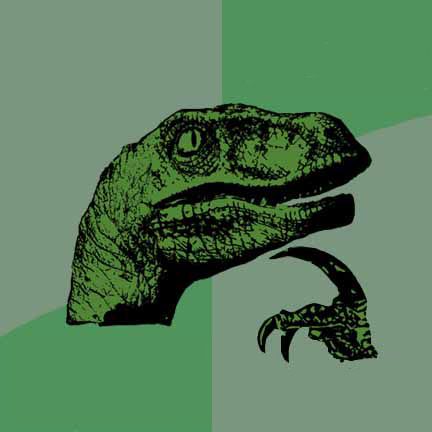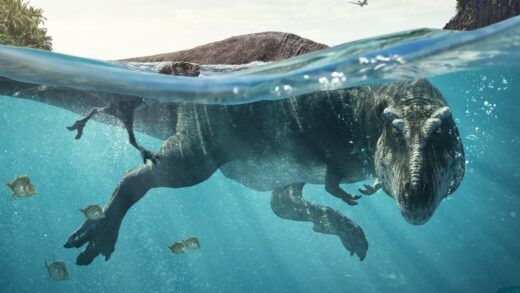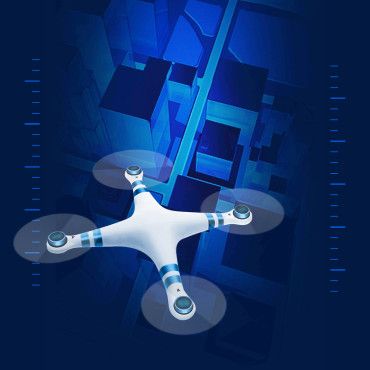
Sometimes, there really is a right place to be, and at a right time. The content topics around ‘bringing back dinosaurs’ are the most popular across my channels. It turned out to be quite the opportunity after a recent tweet from Jack Horner, that I got a chance to ask him some questions about his Chickenosaur project. I had to first get his take on DinoChicken vs Chickenosaur for the project name. “Good question, I’ll take either.” was his response. We’re going to stick with DinoChicken since that seems to be his choice, but you can leave your choice in the comments. Now, thanks to Dr. Horner, you’re going to get a glimpse into what it actually takes to bring back dinosaurs. Buckle up.
Dinosaurs Sized Expenses
I wanted to start by getting a big picture idea of what the project costs. As a complete and total genetic modification laymen, my only reference is the famous ‘spared no expense!’ movie line from John Hammond. “Its a $2,000,000 project and we’ve gotten and spent a little over $1,000,000 to date.” Dr. Horner noted, adding that they are currently being funded by some small grants. Some of the largest costs outside of salaries for the project are chemicals like reagents, biological dyes, EDTA, buffers, inhibitors, and antibodies.
To give you an idea of what some of these things cost, I did some internet shopping:
- 475ml/~16oz buffers costs $120.30
- 100g/~3.5oz Alcian Blue biological dye costs $846.93
- 500ml/~17oz EDTA costs $24.51

Things look pretty expensive, especially when you consider the small quantities. Even if you cut the prices in half, you can still see how costs pile up really quick. Currently, there is a live GoFundMe for the DinoChicken project. You can donate there, and be a part of bringing back the first dinosaur. That’s not all you’ll get either, keep reading to the end!
Dr. Horner mentioned “complications of the tail” in the same tweet I referenced earlier. This tail complication has been the project’s holdup for several years now. “For a time it was a road block but there now exists a potential way around it. It’s going to require funding.” Hence the need for funding at this particular moment. This potential tail breakthrough is so important because it’s the final hurdle to creating a DinoChicken. The snout with teeth, and the hands, have already been worked out. The tail is literally all that stands in the way of completing this project, and dropping a dinosaur like this back on the Earth after 66 million years.
A Post DinoChicken World
What’s going to be the big deal with a DinoChicken? How is this little guy going to change the world? You have to start from the perspective of a chicken. After all, that’s where this story begins. One easy place to start is how a chicken walks. It walks a certain way because of how it has evolved. Adding a tail could change it’s center of gravity, which will in turn change the way it walks. That could in turn change the height it’s head is from the ground, affecting it’s ability to hunt for food. You can see the cascading domino of effects here. Vocalization is another unknown. Sounds traveling through a beak are going to be different than sounds traveling through a snout with teeth. “Version 1.0 Chicken sounds” as Dr. Horner calls it. These are just a few examples. Dr. Horner himself has no idea what these changes may do to a chicken’s behavior.
We’re in for a little bit of a scientific adventure here folks.

I asked how deep the changes for the chicken itself would go. If the changes would be simply cosmetic, or something ingrained that would be passed on to it’s offspring. “They will be made one at a time, changing gene sequences. Deeper than cosmetic but we are not changing its DNA.” Presumably the answer is that a DinoChicken would produce a chicken, not another DinoChicken. No packs of wild DinoChickens wandering the streets folks, sorry.
Bringing Back Dinosaurs
I love a good conspiracy theory, and that part of me really clung to Dr. Horner’s message, ”
“Dinosaurs are going to be brought back one way or another!” I asked him if he had any other ideas on how to bring back dinosaurs. He listed several biological modification tools at his disposal: Cisgenic, transgenic, CRISPR.
Fun fact: No CRISPR has been used on this project to date.
These are all gene modification methods, not DNA recreation, so I pressed on. I really didn’t want to be the “Jurassic Park Dino DNA from bugs in amber” guy, but I’ve been pointed to, and come across, several theories while exploring this dinosaur project. Given the opportunity, I had to shoot the best three to Dr. Horner for his take.
- 25 million year old DNA was found from a tick preserved in amber – The process has never been repeated, and no other DNA older than a few thousand years has been found.
- Soft tissue DNA from somewhere? (maybe somewhere very cold?) – The world was virtually ice free when the dinosaurs lived and died on earth. No replicable DNA found as yet.
- AI assisted DNA sequencing – Not impossible, but then you need a cell or similar environment in which to insert the DNA so that proteins initiate proper sequences.
There you have it. Our self-aware computer friends could be our best chance to bring back dinosaurs. Someone put me in touch with Elon Musk.

The Future of Dinosaurs
Bringing back dinosaurs might not be the next step in our understanding of these creatures. The project could finish tomorrow, or ten years from now. I asked Dr. Horner what he thought was the next big thing for paleontology and/or dinosaurs. “Everything we learn about these amazing animals is important, but people need to understand the difference between ideas backed up by physical evidence and ideas that are simply opinions. Physical evidence also needs to be critically evaluated.” Separating fact, opinion, and speculation is an important part of furthering our knowledge of dinosaurs. Specifically the general public. When the average person’s understanding of dinosaurs comes from Jurassic Park, they not only are losing out on just how awesome dinosaurs really were(are), but they also have some facts fundamentally wrong. Imagine buying a house today, using information from 30 years ago, or 60 years ago, or pictures doctored with Photoshop. You cannot begin to make an informed decision that way. Maybe we just need a giant period of clarification. Spend some time educating people on what we know now.
I asked Dr. Horner what he thought the best way is to change the public’s ‘Jurassic Park‘ based view, to a more modern and scientific one. “I’m currently working on an exhibition experience to show the public my new ideas (based on physical evidence) of what dinosaurs should look like and how I think dinosaurs like T. rex and Triceratops would have behaved. It’s a project with BASE Entertainment, and will be in museums early next year. An accurate movie would obviously help as well!”
Aside from the medical discoveries benefiting humans that have already been made, there is something more to gain from the success of the DinoChicken project. As to the question of patent ownership, Dr. Horner responded, “Hopefully no one!” That’s right. You could theoretically make your own DinoChicken at home. If you want to see open source dinosaurs, make sure you do everything you can to support this project. Keep it out of the hands of private interests!

In closing, when I asked if there was anything he wanted to share, Dr. Horner had this message for everyone: “Be a critical thinker, consider what we have evidence for and what are just wishful thoughts…. I originally thought the dinochicken project would have been easier… its not, but it is doable.”
Enormous thanks for Dr. Horner for taking the time to answer all my questions, and giving everyone an update on his DinoChicken project. If you want to help this project move forward, whether it’s $5 or $500, consider donating on the DinoChicken Project GoFundMe page. I’ve already donated myself. I can’t wait to go down in history as one of the people who helped bring back dinosaurs because it’s going to be one heck of a conversation starter.



